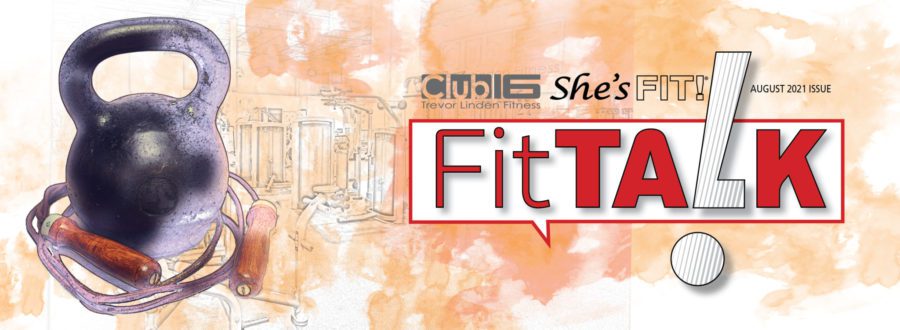Cardio vs. Weights: Which Is Better for Your Fitness Goals?
Working on your fitness can be daunting when you have two different camps telling you what’s best. But is one really better than the other? These two forms of exercise offer different benefits and can come together for the greater good — a strong bod and stellar health.
What’s the difference: Strength training vs. cardio
While it’s obvious that cardio and strength training are different exercises, what’s going on in your body is really what sets them apart.
Strength training (aka weight training, resistance training, or whatever other term you prefer for lifting weights) is an anaerobic activity. This includes lifting free weights like barbells, dumbbells, and kettlebells or using weight machines.
Anaerobic exercises break down glucose for energy, without relying on oxygen like cardio does. More energy is used in a short amount of time.
Cardio (short for “cardiovascular conditioning”) is an aerobic activity, which means it uses oxygen to increase your breathing and heart rate. Running is often the most polarizing of the cardio bunch, but any activity that makes you breathe harder and faster and increases your heart rate counts.
If you’re team cardio, you can get moving with activities like running, cycling, swimming, or even a Zumba class, to name a few.
Why join Team Cardio?
1. Improved heart health and endurance
Cardio helps keep your ticker pumping strongly and efficiently, especially when you need endurance. When you do any cardio workout, your heart rate goes up and you start breathing faster as your body tries to get more oxygen for your blood. For example, when you start inhaling deeply during a run and praying to make it to the next tree, your body is doing this oxygen exchange.
Cardio exercise helps boost your aerobic capacity (how much oxygen your blood gets and uses) and allows your heart and lungs to more efficiently move oxygen through your body (good job, body!).
This not only helps you get through longer workouts but also prevents huffing and puffing whenever you take the office stairs.
2. You can burn more calories *during* your workout
When you burn calories during any workout, your body is using up energy to power through it. How much you weigh will affect how much you burn. (A 180-pound male uses more energy to run 3 miles than a 120-pound female does.)
Another big plus for cardio is that you’ll burn more calories during your workout than you would when weight training (big emphasis on during).
According to Harvard Medical School, a 155-pound person burns about 112 calories when lifting weights for 30 minutes and 372 calories when running at an average 10-minute-per-mile pace for the same amount of time.
A 155-pound person can also burn 391 calories in 30 minutes of vigorous stationary cycling. So if you’re a SoulCycle fan (*ahem* cycling cult recruit), there’s a reason you sweat through all your clothes in every class.
3. Faster weight loss
Compared to weight training and workouts involving both cardio and strength, just plain cardio is the queen of burning more fat and faster weight loss.
A 2012 study from Duke University and the National Heart, Lung, and Blood Institute (NHLBI) looked at three groups of adults with overweight or obesity who did cardio, strength training, or a combination of both to see the effects on weight loss.
The results: Cardio kicks butt at reducing fat and body mass compared to just strength training. Those who did a combination of the two (which took twice as much time to complete) had the same weight loss results as those who did just cardio.
Why join Team Weights
1. Gains on gains
Weight training still burns calories, but it’s really good for building muscle. There’s a reason you don’t see many jacked elite marathoners or svelte professional weightlifters.
The same 2012 study that found cardio was more effective for weight loss also found some great benefits of strength training. Participants who were part of a resistance training program increased their lean muscle mass, which in nontechnical speak means they started to get ripped.
2. You’ll burn calories all day
While a cardio workout will help you burn more calories during a sweat sesh, strength training helps you keep burning those calories throughout the day.
This is thanks to that muscle you’re building, which increases your resting metabolism (aka your body’s ability to burn calories while binge-watching Netflix). Muscle helps your body burn more calories when at rest than fat does.
A small 2001 study that compared the resting metabolism of men and women who strength trained found an increase in resting metabolism for both genders.
Men had a 9 percent increase in resting metabolic rate, and women had an increase of about 4 percent (which is not considered “significant” — how rude!). When both groups’ results were combined, the result was an overall 7 percent increase.
3. You can prevent injury
Lifting weights also helps increase bone density, which affects the strength of your bones. If you’re lifting dumbbells, you’re on your way to stronger bones, which can help prevent osteoporosis as well as breaks and fractures.
Stronger muscles also help out your joints by supporting them, reducing your risk of knee or shoulder injuries and arthritis.
Cardio and weights: Why choose when you can do both?
1. You’ll lose fat but gain muscle
By combining strength training and cardio, you can get the best of both worlds: fat loss and muscle gain. It’s going to take a little more time to incorporate both, but it’s time well spent if you want less fat and more muscle.
You can’t totally rely on the number on the scale to track your weight loss if you’re strength training and incorporating cardio, because muscle has greater density than fat.
2. You’ll have even better heart health
In a 2019 study, participants who did a combination of strength training and cardio for 8 weeks had greater improvement in heart disease risk factors than those who did just one or the other. Your heart with thank you for combining both forms of exercise.
3. Your mental health will improve
Research has shown that exercise does wonders for improving anxiety and depression. A 2017 study found that resistance training helped improve anxiety in both healthy participants and those with a physical or mental illness.
Which should come first: Cardio or weights?
This question will send you deep into a bro-science rabbit hole. But the American Council on Exercise (ACE), which certifies personal trainers, has made sense of which order is better for your goals.
When to do weights before cardio
If you want to burn more calories with less effort, ACE recommends doing cardio after strength training. An ACE-backed study in 2014 found that doing cardio after lifting resulted in a heart rate 12 beats per minute faster than doing cardio alone.
Weights before cardio is also a better strategy if your goal is to build strength. For example, if you’re lifting to train just your lower-body muscles (leg day, anyone?), ACE recommends doing weights first.
When to do cardio before weights
If your goal is to have better endurance for an upcoming race, cardio before weights is the way to go.
How much cardio/weights per week?
How much you run, bike, or lift each week depends on your goals.
As a baseline for cardio, a study from the American College of Sports Medicine suggests that 150 to 250 minutes of moderate to vigorous activity like cardio will help most people maintain their weight and people with moderate diet restriction lose some pounds.
In workout speak, that would be five to eight 30-minute cardio sessions a week. You’d need to do more than 250 minutes a week for significant weight loss.
If you’re working to accomplish a major fitness goal like a triathlon or a marathon (😱), you’ll want to look into dedicated training plans that will bump up those minutes with necessary mileage.
For strength training, a general rule of thumb is 2 or 3 days a week of full body exercises or 3 to 5 days of exercises separated by muscle group (chest, shoulders, back, arms, legs, etc.). Weight training sessions should last 20 to 30 minutes.
A 2016 study suggests weight training at least twice a week for ultimate muscle gains. Training two or three times a week can also help you maintain the muscle you worked hard to build.
In conclusion:
- Cardio burns more calories during your workout and burns fat faster, so it’s ideal for weight loss.
- Strength training helps you build muscle and burn more calories all day (even while on the couch).
- Running, cycling, or another form of cardio is great for a healthy heart.
- Combining cardio and strength training is fab for fat loss and muscle gain and even better for heart health.
- Cardio after weights = more weight loss.
- To prioritize weight loss, get in five to eight 30-minute cardio sessions a week.
- For muscle gain, lift for 20 to 30 minutes at least three times a week.
Source: https://greatist.com/health/cardio-vs-weights#how-often-should-you-do-cardio-or-weights
Cheddar Cheese Muffin Tin Bites

Ingredients
- 2 Tbs Olive Oil
- 1 1/2 Cup Finely diced Red-skinned Potatoes
- 1 Cup Finely Diced Onions
- 3/4 Salt
- 8 Large Eggs
- 1 Cup Cheddar Cheese (shredded)
- 1/2 Cup 2% milk
- 1/2 tsp Freshly Ground Pepper
- 1 1/2 Cups Fresh Spinach (chopped)
Directions
- Preheat Oven to 325 F.
- Preheat Pan with Olive Oil.
- Add Potatoes, Onions and half the Salt – cook for 5 minutes (stir well).
- Mix eggs, milk, and Cheese in a mixing bowl; add rest of salt and pepper.
- Add chopped spinach to egg, milk, and cheese mix.
- Add Potato & Onion mix with eggs, cheese, milk, and spinach. Mix well.
- Scoop into Muffin tins (will fill approx. 12)
- Bake at 325 for 25 Minutes.
30 min prep time, 25 min bake!
Refrigerate for 3 days or freeze for 1 month









